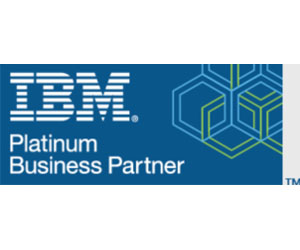Balancing the Risks and Rewards of Artificial Intelligence
Survey data shows that business leaders are positive about the potential of artificial intelligence. For example, 64% expect AI solutions to improve customer relationships, and the same number expect increased productivity; 60% also anticipate more sales with artificial intelligence on board, and 59% believe intelligent tools will help them save money.
But Sridharabalan also identifies three risks that can impact artificial intelligence adoption: regulation, reputation, and operation.
Regulation risks focus on compliance. For example, are AI operations aligned with industry, government and international expectations? Reputational concerns are centered on data misuse. Even if this misuse is unintended and accidental, it can negatively impact client and consumer perceptions.
Operational risks are tied to the efficacy of AI deployments. If businesses have committed significant resources to AI but are stuck in preproduction, they stand to lose both time and money.
“If you put all of that together,” Sridharabalan says, “compliance is the leading concern. Businesses need to think about compliance and governance more proactively. As a result, we’re seeing a shift in the market.”
Click the banner below to demystify artificial intelligence adoption in your organization.
How IBM’s watsonx AI Platform Works
IBM is no stranger to artificial intelligence. “We’ve been in the field of cognitive solutions and AI for quite a few years,” Sridharabalan says. “We saw momentum with ChatGPT. Our watsonx AI and data platform enable customers and partners to develop, improve and govern GenAI and machine learning models.”
The watsonx platform follows suit with a sophisticated approach to artificial intelligence that includes three core components:
- Data: As a trusted lakehouse, watsonx.data lets companies access data where it lives. This arrangement can save companies up to 50% on data warehouse costs, Sridharabalan says.
- AI: The platform is entirely customizable, so whatever enterprises want to build and however they want to build it, watsonx.ai can help, and IBM experts are there to guide IT leaders strategically. “Companies can use one of our foundational models,” says Sridharabalan. “They can also bring their own model to the platform. It’s completely open from that perspective.”
- Governance: With watsonx.governance, organizations get oversight at the model lifecycle level. Risk can be understood and governed at each stage of development, deployment, and production.
Sridharabalan notes that it’s a priority to meet customers where they are. “IBM’s watsonx is available both as on-premises software and as a service,” she says. “It’s built on Red Hat OpenShift. Companies can deploy it on the cloud of their choice.”
LEARN MORE: Get the AI solutions that fit with your evolving business needs.
Why watsonx.governance Gives Teams More Confidence
Without a clear governance plan in place, no artificial intelligence strategies will be successful. As the governance component of the all-in-one platform, watsonx.governance takes that guesswork out of the equation.
Enterprises can evaluate, track and document the history of machine learning model iterations. IT leaders can monitor models in production to ensure outputs are valid and accurate and evaluate models for bias. Teams can also automate retraining of machine learning models based on production feedback.
“Think of the watsonx platform as a vehicle to reach your desired outcomes,” says Sridharabalan. “In that vehicle, watsonx.ai is the accelerator, watsonx.data is the fuel, and watsonx.governance provides the safety features that keep you on track.”
Brought to you by:













